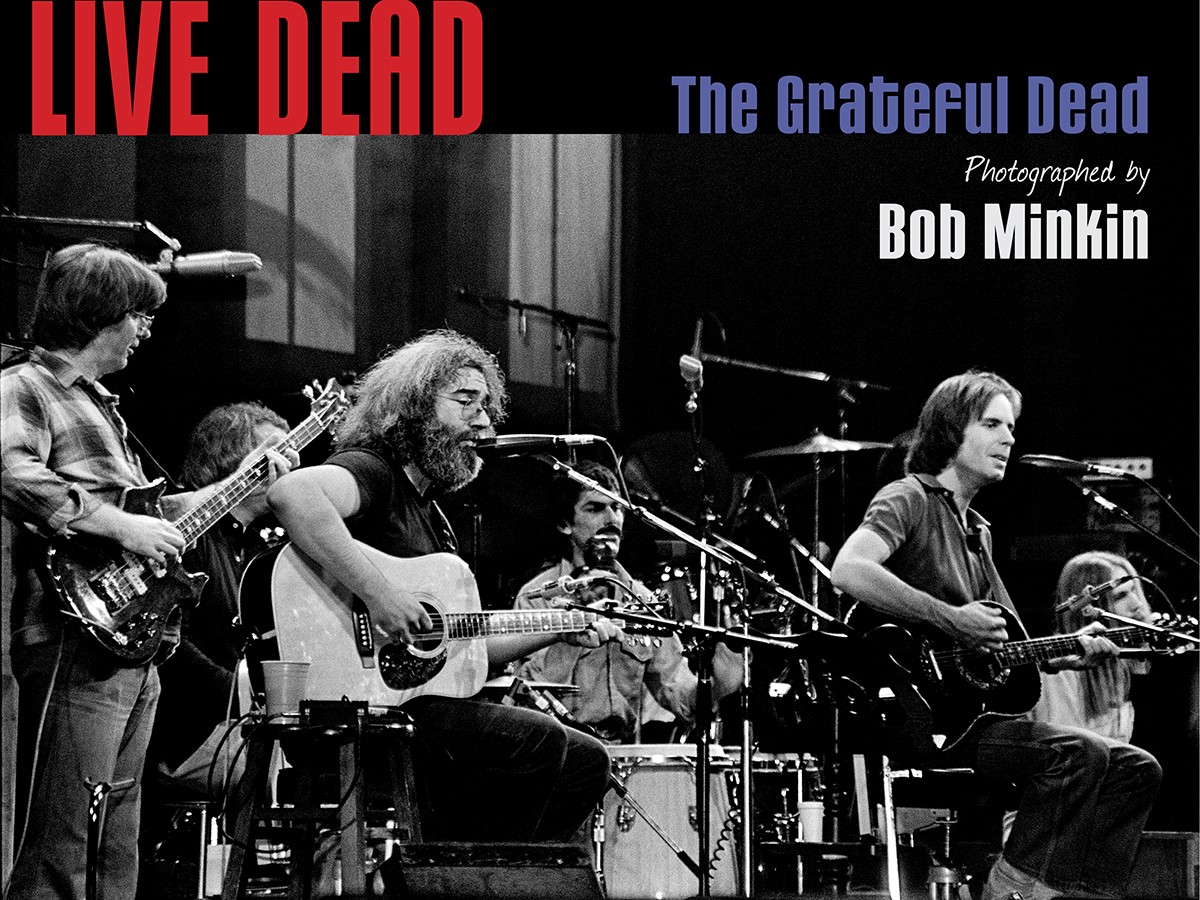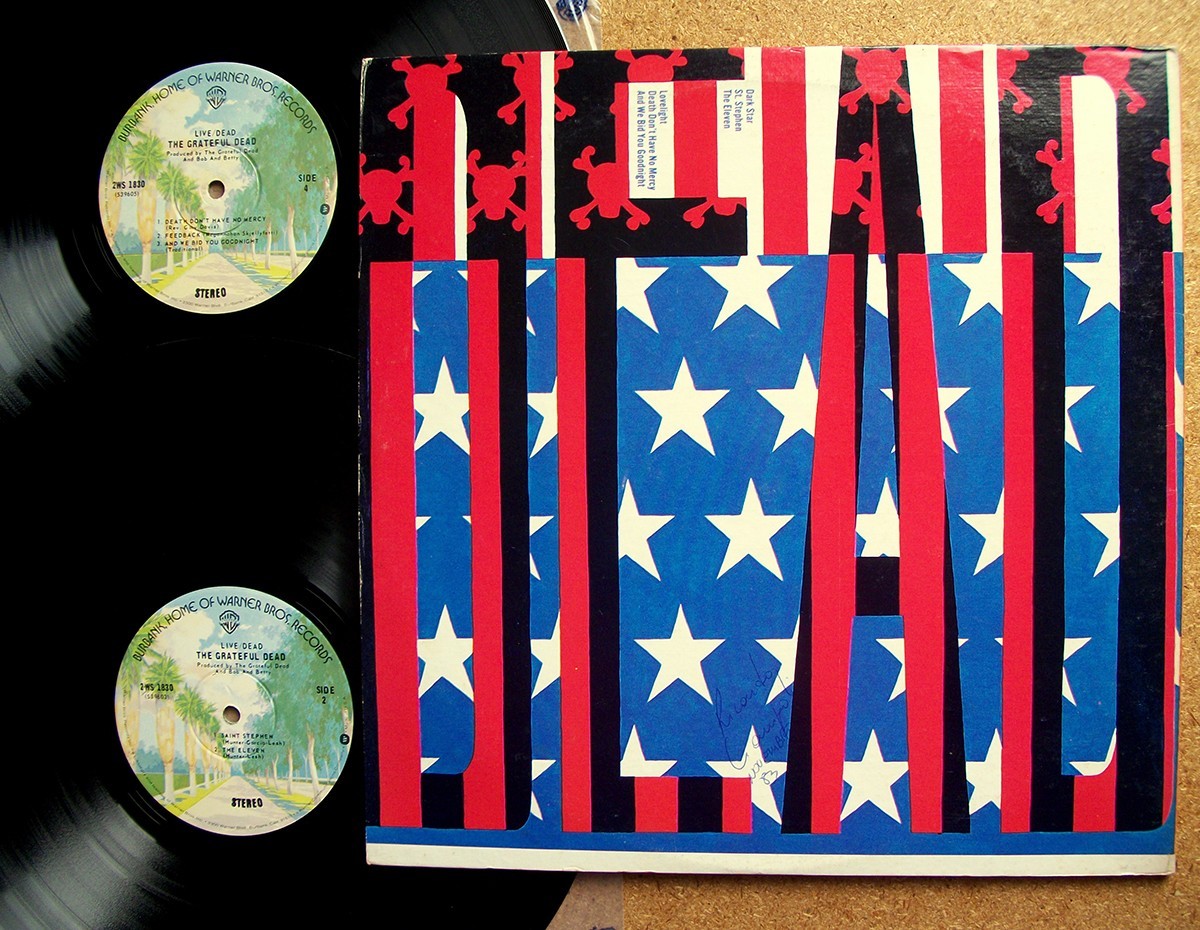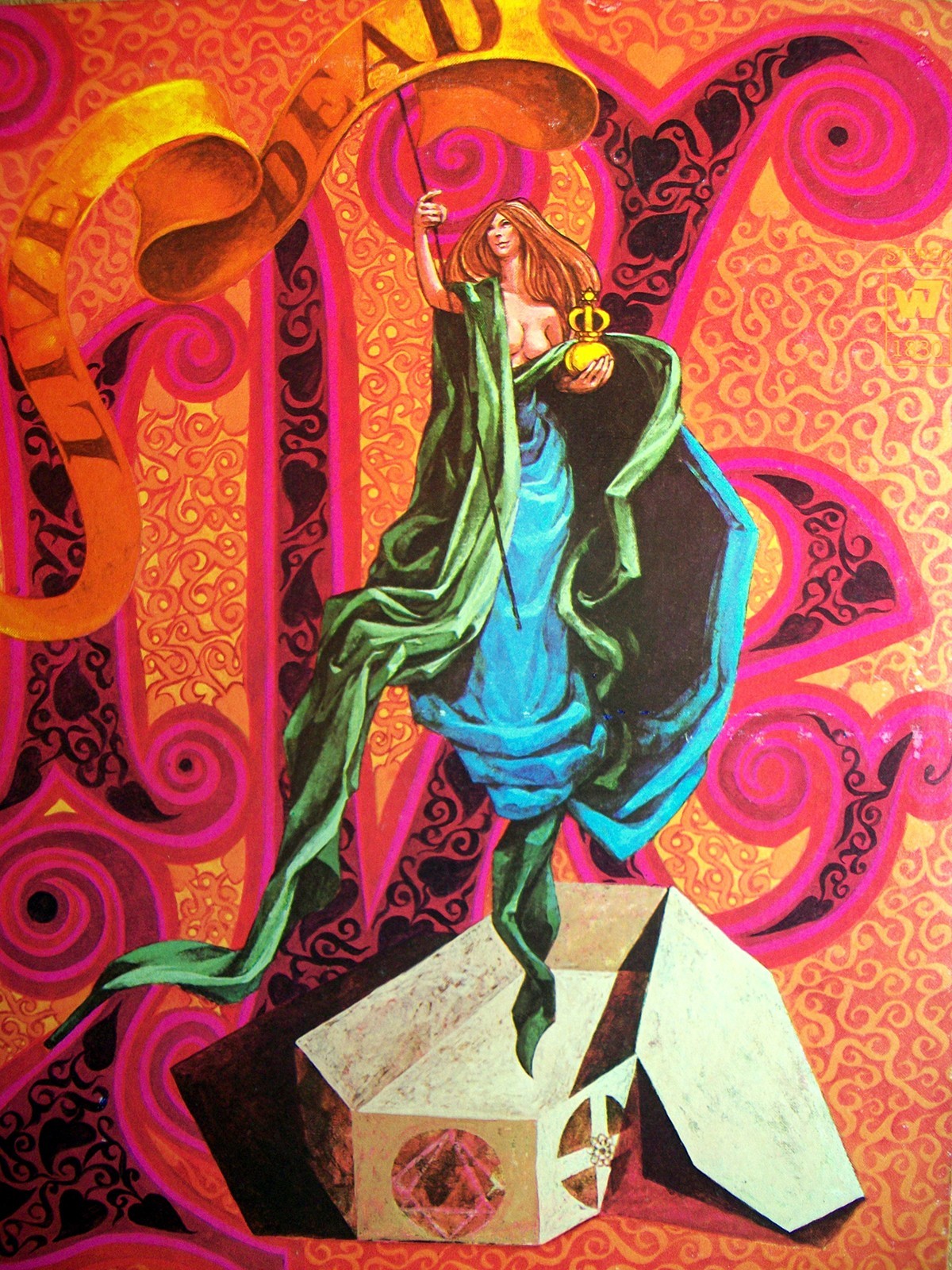The story of the Grateful Dead's album Live/Dead (1969)
Содержание
The live album Live/Dead is the first official and fourth live album by the American rock band Grateful Dead, whose name translates to "grateful dead". The album was released in autumn 1969 with the help of Warner Bros. Records. The name of the record itself is literally translated quite punningly as "Live/Dead", if we take into account that the word "Livе" denotes a concert record, and "Dead" is often used as a shortened abbreviation of the name of a rock band.

The album includes recordings from three different concerts from 1969. The recording itself was done using a sixteen-track mobile studio. In those days, 16 tracks was very cool! In the same year, the highly equipped EMI Records studio in England, located on London's busiest street, Abbey Road, also had a sixteen-track recorder. However, due to bureaucratic delays, it had to stand unexcavated for a long time. The Beatles and their producer George Martin had to use this technological marvel almost illegally to record the album "Abbey Road".
The backstory...
At one of the parties organised by LSD propagandist Ken Keesey, the Grateful Dead met Owsley Stanley, an American sound engineer and a key figure in the then burgeoning hippie counterculture.

Stanley had the nickname "Bear" and was listed in San Francisco County as a "secret chemist" because of his addiction to LSD cooking. In addition to this skill, however, Owsley had near-perfect sound engineering skills. Thus, this acquaintance gave the rock band a tour manager, who soon became its sound engineer. Stanley was responsible for sound quality during live shows and also served as a muse for the Grateful Dead, inspiring the band to experiment boldly with sounds that brought new electronic and acoustic notes to their compositions. Owsley Stanley made a major contribution to the improvement of the band's live equipment.
He proved to be a master of acoustic engineering, starting two high-profile firms: Alembic Inc, which manufactured high-end custom-made music equipment, and MeyerSound, which specialised in high-end acoustic equipment. Through the diligence of the sound engineer, the team was equipped with top-of-the-line acoustics for live performances. The equipment produced such loud and clear sounds that fans who could not fit into the usually packed concert venue were able to fully appreciate the efforts of their idols even outside the venue. Stanley skilfully built an entire wall of sound from the most powerful giant loudspeakers that only a handful of bands of the time could boast of having. The acoustical engineer endeavoured to combine the technical performance of the equipment with stylish design.

The Grateful Dead rose well and became famous, becoming more than just a rock band. Stanley, however, sponsored them well, giving them a solid living from his acoustic "architecture". For the most part, the famed musicians were a hippie commune where you could meet a bunch of friends and girlfriends with their friends - in general, a lot of freeloaders who didn't mind partying at someone else's expense. Musicians unselfishly provided free accommodation, food, and sometimes even alcohol and drugs. It was in this environment that Stanley showed his abilities, skilfully manufacturing LSD, which was considered legal at the time, for the hippie commune. Rumour has it that in two years Owsley produced over 1,200,000 doses of the hallucinogenic drug, most of which were given away for free. This is what makes Stanley not only the founder of the San Francisco counterculture, but also one of the key proponents of the anti-totalitarian and anti-war movement of the 1960s.
This mega-man sat tirelessly at the console during the band's live shows, including the ones that were added to the Live/Dead work. Owsley loved recording live, and he didn't just do it for albums. He arranged for another acoustic musician, Ron Wickersham, to make a special sound distributor for the microphones so that concerts could be recorded without compromising sound quality. But the main focus was clearly on the performers themselves. Live/Dead is not just an album. It is a living example of the band's improvisational skills during live performances, as well as a musical monument to the era of the San Francisco counterculture. The photos on the inside of the spread seem to transport you to that atmosphere. Cheerful and lively young faces smiling lasciviously on the concert stage... Or a photo of the Grateful Dead themselves, with one of the musicians slumped over, completely passed out? Undoubtedly, it's a great mood-booster when combined with the album tracks themselves!
Dark Star.
"Dark Star" and "Saint Stephen" were recorded in December 1960s, during a live performance at Fillmore West, while "The Eleven" and "Turn On Your Lovelight" were recorded a month earlier at Avalon Ballroom.
"Dark Star" is the shortest track - only 2 minutes, released in 1968. The performers themselves loved this song. It was their speciality: to stretch a two-minute track to 20 or even 30 minutes during a concert! Back then Grateful Dead fans were allowed to freely record live, which explains the existence of many recorded pieces, but of poor enough quality. That's why the first official live work - Live/Dead, recorded in good sound, was the greatest gift for all devoted fans.

The great variety of recordings of "Dark Star" created a lot of controversy around the song. Fans tried to establish the duration of the longest variation of the single. Some claim that such a game was the performance of the song in December 1973. Then the band stretched the composition for almost 44 minutes! However, more attentive connoisseurs remember another, longer version. In the summer of the late 1960s, "Dark Star" was played for 63 minutes! It's worth noting that it included a ten-minute rendition of "The Eleven". But this version can't really be considered a Grateful Dead achievement, as the band played it with a changed line-up - without Weir and McKernan. For the most part, one of the longest variations is the one performed in May 1972. With a four-minute drum solo included as an integral part of the track, it was 47 minutes long.
In the album itself, "Dark Star" plays for 23 minutes, 13 of which consist of a guitar solo by Jerry Garcia. A snippet of the track, by the way, was included in the cult film masterpiece "Zabriskie Point".
Since 1975, the song "Dark Star" has been played less and less frequently at concerts. For this reason, to get to a concert where Dark Star was played was like finding a bar of gold for the fans. Recognising this, the Grateful Dead often teased the audience by starting with the intro of the coveted song and then abruptly switching to another track.
Album artwork and contents
The idea of a double live album was born for a reason. From early autumn 1968 to early spring 1969, the team spent a lot of time working on "Aoxomoxoa". Warner Bros. Records, their record company, gave an average cost of 180,000$ to the work, which at the time was considered just huge. This amount was put on the rock band's account as a debt against further sales. Then one of the members had the idea to create a double live album. This way it would be possible to give the company three records for the price of one. Later Live/Dead became a huge financial success, and the record company more than recouped its investment.

The envelope of the original record is unconventionally and spectacularly decorated on both sides: the front side is decorated with a large inscription "Live", and the back side - "Dead", which stands out coolly against the background of the US flag, on which stars are replaced by skulls. Also, if you look closely, the upper part of Dead hides the word "Acid", which often served as a disguised name for LSD.
As soon as the album was released, famed rock music critic Robert Kreitsgow noted that Side Two was a treasure trove of some of the best rock improvisations he'd ever heard.
Achievements
Live/Dead is a work enriched with the art of rock improvisations. The album was included in the top 500 best albums in music history, according to Rolling Stone magazine, and, it should be noted, it was ranked 244th, which is not bad at all. It was also included in Robert Dimery's book "1001 Albums to Listen to Before You Die".



